The Poetical Works of John Milton by John Milton (Aesthetic Movement Binding), 1889 📜🎨🇺🇸
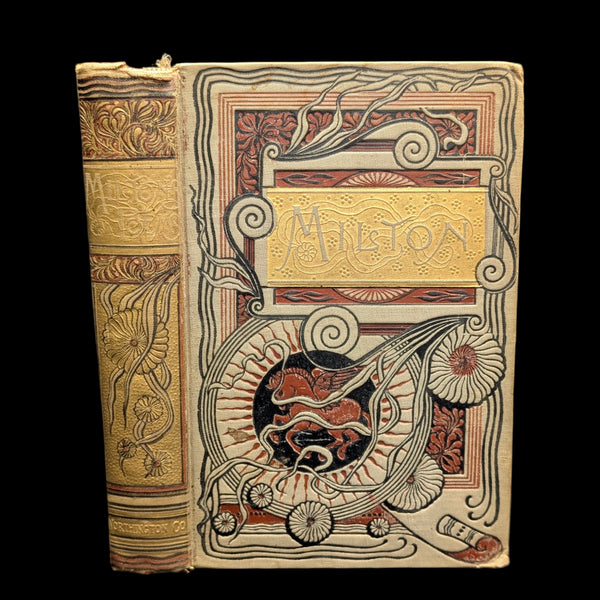

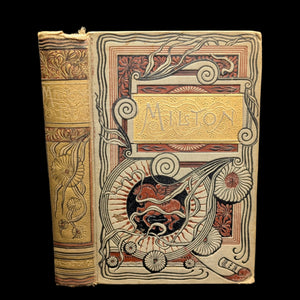
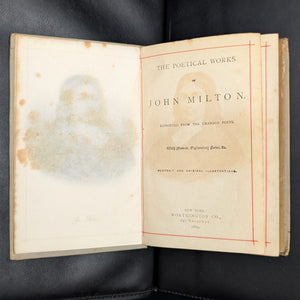

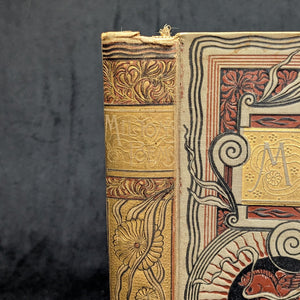
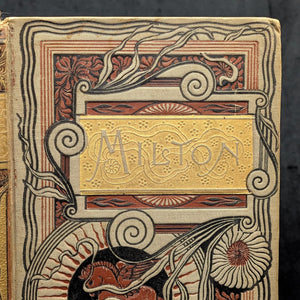
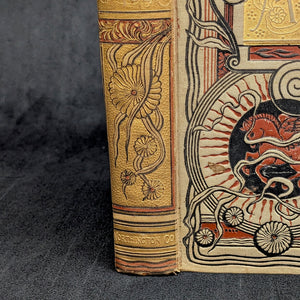
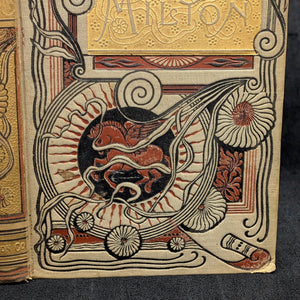
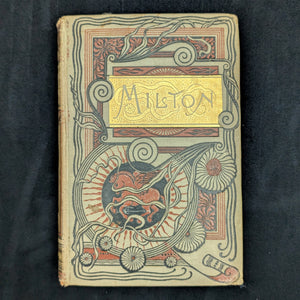
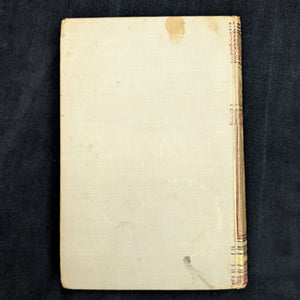
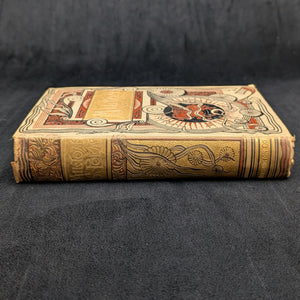
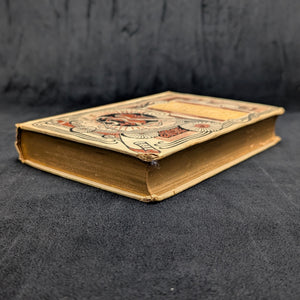
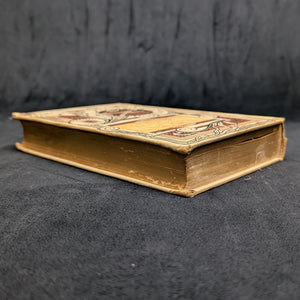
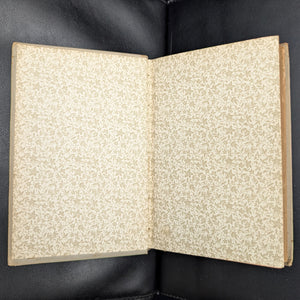
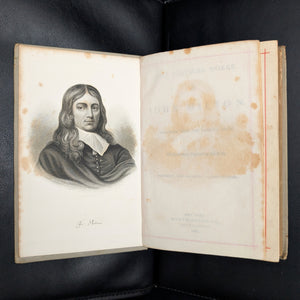
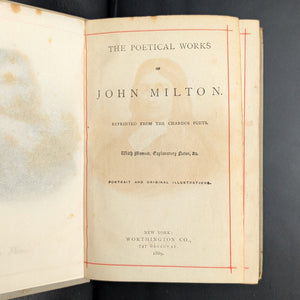
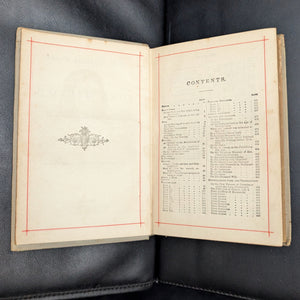
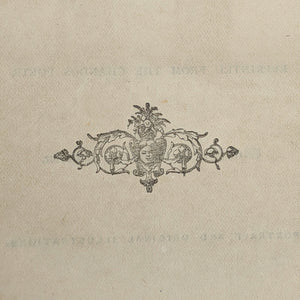
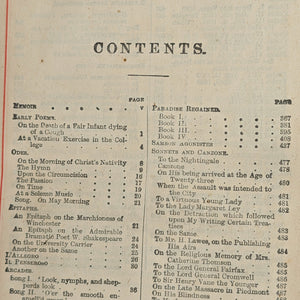
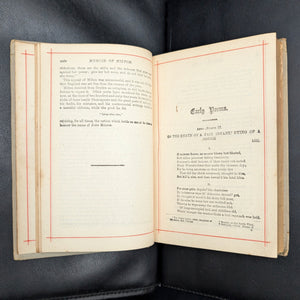
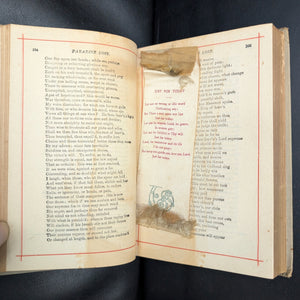
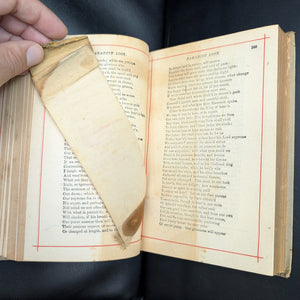
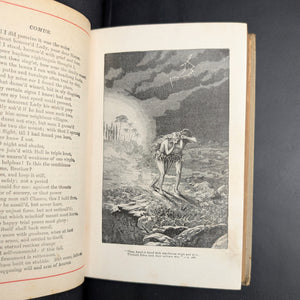
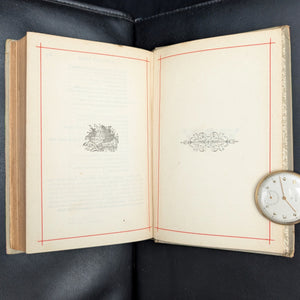
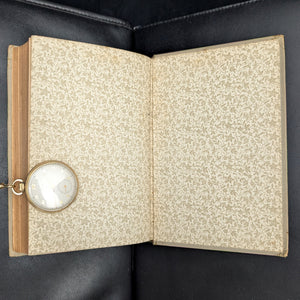
This volume is a top-shelf example of American Victorian decorative bookmaking, containing the complete poetical works of John Milton.
Published in New York by Worthington Co. in 1889, this edition is a precise reprint from the esteemed Chandos Poets series, including a biographical memoir, scholarly notes, and a frontispiece portrait.
Its classification is based on its material status as an object of art from the Aesthetic Movement, not textual rarity. This artifact represents an era when book covers were designed as ornate, intricate works of popular art, establishing it as a strategic investment for collectors of decorative bindings.
2. About the Artwork/Book/Object📖✍️✨
The volume features the cornerstones of the English literary canon, including the epics Paradise Lost and Paradise Regained. The book's binding is the primary artistic feature, showcasing the intricate, stylized design characteristic of the Art Nouveau period.
The cover is dominated by a complex, swirling design of organic forms, utilizing a sophisticated palette of bold red, black, and gilt on a beige cloth board. A winged, serpent-like creature is prominently displayed against a circular motif, a clear iconographic reference to Satan, temptation, and the moral struggle that forms the core theme of Paradise Lost. The cover is a preserved artifact of American Victorian decorative bookmaking.
3. About the Author✍️🏛️
John Milton (1608–1674) is recognized as one of the most significant poets in the English language. A staunch intellectual and political radical, he served as a civil servant under Oliver Cromwell's Commonwealth.
His most famous work, Paradise Lost, which chronicles the Fall of Man, was composed after he had gone completely blind and faced political disgrace following the Restoration. The immense scope of his poetry cemented his legacy as a figure whose work is deeply tied to the tumultuous 17th Century English Civil War and its ideological aftermath. This 1889 edition served to make the work of this towering figure accessible to the American public.
4. Historical/Political Era Context🌍🕰️📜
This volume was published in 1889, situating its creation at the height of the American Gilded Age. This era was characterized by rapid industrialization, the accumulation of immense private wealth, and a surging cultural embrace of European aesthetics.
The production of such a highly decorated edition of a classic English author reflects the Gilded Age desire for cultural sophistication and the establishment of impressive personal libraries. Simultaneously, the Aesthetic Movement sought to elevate decorative arts and bookmaking to the level of high art, rejecting purely utilitarian design. This book is a tangible window into the material culture of 1889 New York.
5. The Ideal Collector💡🧐🏛️
This volume is an essential component for a curator of American decorative arts and late-Victorian book design. While the literary content is widely available, this specific Worthington Co. printing is desired for its material culture and artistic merit.
The collector who acquires this book is focused not on first edition status, but on the architectural artistry of the binding itself. This is an acquisition for an individual with an appreciation for design history and a dedication to building a library that documents the evolution of American publishing aesthetics.
6. Value & Rarity💎✨🏛️
The item is 136 years old (published in 1889) and has survived over a century of handling and environmental changes. The rarity is not textual, but is based on the survival of this specific decorative binding—a piece of mass-market craftsmanship that was frequently discarded—in this condition.
This is a material artifact of its time, not a bibliographical rarity. Its value is established by the market scarcity of high-appeal Aesthetic Movement bindings from this era. The internal condition defect prevents a high-end valuation, but the undeniable quality of the cover art maintains a strong collector premium. The book has undergone a typical life-cycle, moving from a Late-Victorian American home to its current status as a curated antique.
7. Condition🔎📚✨
This is a transparent and factual condition report based on direct visual analysis of the provided photography.
-
Positive Qualities: The cloth binding remains tight. The ornate, multi-color cover design is still clearly legible and retains significant vibrancy on the front board. The frontispiece portrait of Milton and the illustrated title page are present and clear.
-
Imperfections: There is a severe, localized brown stain that affects the endpapers and continues through page 105 of the text block. This is a chemical burn resulting from a prior owner's acidic bookmark placed near page 104. The spine shows rubbing and minor creasing consistent with age. The corners of the boards are bumped and worn. The text block edges are gilt but show abrasions and fading.
8. Fun Facts & Unique Features🤓📜🤩
-
The original publication of Paradise Lost in 1667 was not an immediate commercial success, leading Milton to sell the copyright for a paltry £5.
-
The Memoir included in this 1889 edition was a standard feature of the Chandos Poets series, designed to introduce contemporary readers to biographical details of the poet, including his controversial 17th Century political career.
-
The use of elaborate, machine-stamped decorative bindings was a technological advancement of the Victorian era, allowing publishers like Worthington Co. to produce 136 year-old collector-grade bindings at a high volume.
9. Supporting Information🏷️📦💰
-
Title: The Poetical Works of John Milton
-
Author/Maker: John Milton
-
Year: 1889
-
Publisher/Foundry: Worthington Co.
-
Place of Origin: New York, USA
-
Format/Binding: Decorative Cloth, Hardcover, Gilt Edges
-
Edition: Reprint from The Chandos Poets
-
Rarity: Collectible Decorative Edition (Common Text, Uncommon Binding)
-
Inscriptions/Notes: No handwritten inscription or signature is present. A decorative 19th Century style ornament is printed on the verso of the title page.

